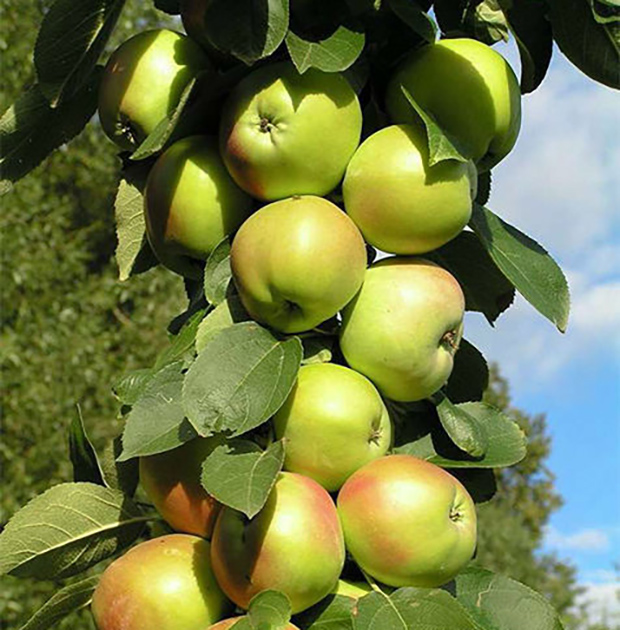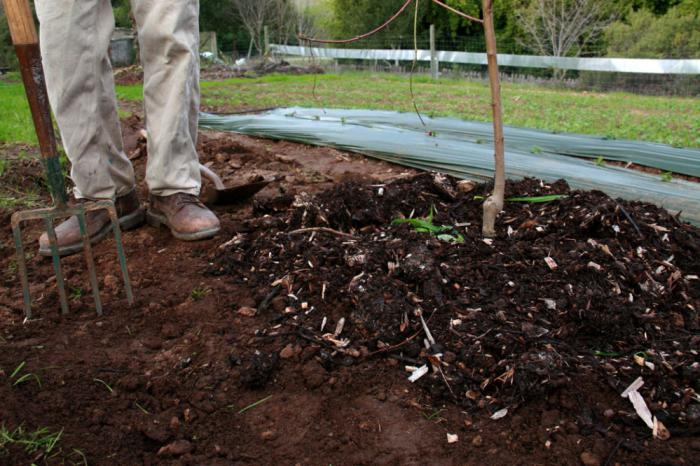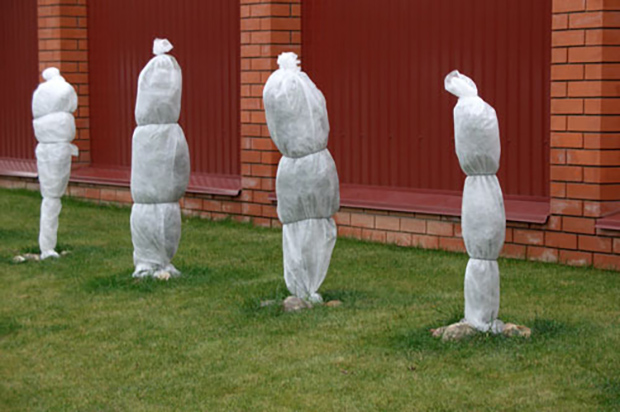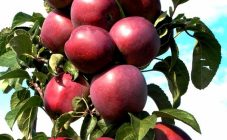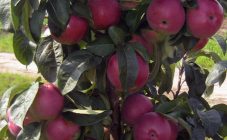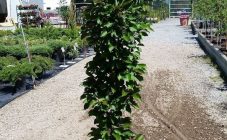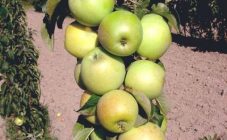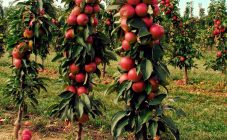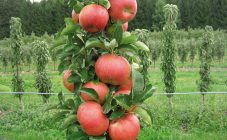Content:
The apple tree is one of the most demanded crops in the domestic horticultural market. There are a huge number of varieties and varieties of this fruit. These include the apple tree Columnar garland.
History of creation
A columnar apple tree means a natural clone of the culture, which is characterized by the complete absence of side branches. The history of the emergence of this species is quite interesting. In British Columbia, in the village of Keluona in Canada, an amazing branch was found on an old fifty-year-old apple tree belonging to the Macintosh variety. It had a huge amount of foliage and fruits, and side branches were almost completely absent. It happened in 1964. The breeders turned their attention to this interesting spontaneous mutation and propagated it. So, over time, columnar apple trees appeared, and the Garland apple variety was among them.
Description of the variety
Columnar Apple Garland is a kind of autumn consumption period. Its ripening begins in September. The tree grows by the sixth year to a height of 2.5 meters. The fruits of the variety are approximately the same size. Moreover, their weight varies from 180 to 220 g. The apple has a slightly elongated shape. One of the advantages of the variety is the rather long shelf life of the fruit. On average, they "live" without problems until February. Fruit color is green. If the plant is planted on the sunny side, apples may develop a dark red blush. The flesh is greenish-white, firm and very tender. The varietal fruit tastes somewhat like a pear: sweet and sour and very juicy.
Features of agricultural technology
To plant a columnar apple tree Garland experts recommend in the spring. If desired, this can be done in the fall. But the weather needs to be nice and relatively warm. It is better to purchase annual seedlings, since they are more likely to take root and begin to bear fruit. When planting in spring, planting holes are recommended to be prepared in the fall. During the winter, the soil will have time to settle and properly compact. The fertilizers introduced during the preparatory work will also dissolve successfully. Planting a culture must necessarily end with abundant watering and mulching.
Watering
Since apple trees of the columnar type do not have a taproot extending deep into the soil, and the root system is close to the soil surface, young plants should be watered in the absence of heavy rains at least once every three days. If the weather is dry and hot, plant care should include daily watering. For mature plants, 1-2 waterings per week are enough.
From the second half of the week, the number of waterings should be gradually reduced, and by August, the procedure should be stopped altogether.
Fertilizer
Since the Garland usually forms a large number of fruits on the apple tree, it takes a lot of nutrients from the soil. Top dressing should be constant throughout the entire period of intensive plant growth.
In the spring, it is recommended to apply organic fertilizers to the soil.Chicken droppings and slurry work best. In order for the tree to begin to actively bear fruit at the end of the season, it is recommended to spray the culture with a urea solution. This will provide the plant with the required amount of nitrogen.
In the second half of summer, you can feed the plant twice more - by foliar method. In this case, a urea solution can also be used.
You can't do without complex fertilizers during the period of intensive apple growth - they should be applied in June.
Pruning
When pruning branches, remember that you should never touch the center conductor. Otherwise, the tree will lose its point of growth and begin to actively grow shoots.
In the spring of trees of the first year of life, the side branches are cut in such a way that no more than two buds remain on each of them. For the next several years, it will be necessary to form fruit links from fresh shoots, and remove unnecessary ones while their color is still green (that is, they have not yet had time to woody). Columnar apple trees have an interesting characteristic - wounds on them heal more slowly and more problematic.
Reproduction
Reproduction of the Garland variety is carried out by grafting a varietal cut on the most suitable stock. This procedure requires some experience from the gardener and takes a lot of time. For this reason, most gardeners leave this procedure to specialists, preferring to purchase ready-made seedlings.
Preparing for winter
The use of straw as a covering material is not strongly recommended. If it was used for mulching, the residue should be carefully removed. Rodents just love straw. And the plant will inevitably suffer irreparable harm.
After the appearance of the snow cover, it will not be superfluous to huddle with snow.
Advantages and disadvantages of the variety
Like any other variety of apple trees, Garland has both disadvantages and advantages.
The latter include:
- high immunity to scab;
- the ability to withstand frosts down to -42 degrees;
- pleasant pear taste;
- aesthetic appearance;
- no need for complex pruning;
- decorativeness of the plant;
- early maturity;
- diminutiveness;
- compactness.
There are also disadvantages. First of all, we are talking about a strong dependence on fertilizing, watering and soil moisture, as well as a relatively short life span.
Before planting an original columnar apple tree on your personal plot, it is strongly recommended to carefully weigh the pros and cons. This culture is somewhat more difficult to care for than any traditional apple tree.
